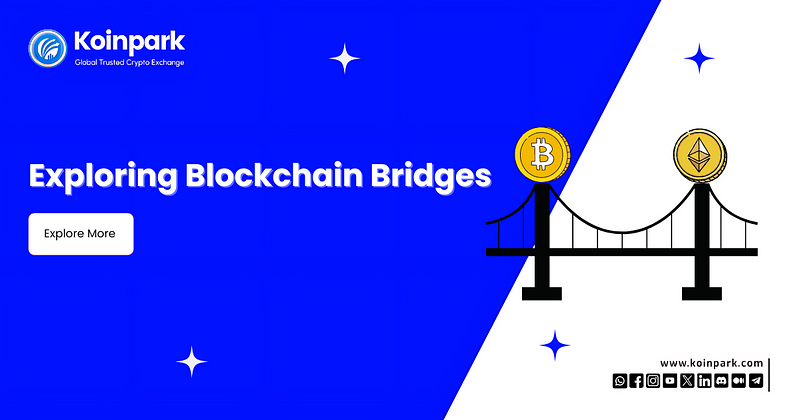Exploring Blockchain Bridges: A Gateway for Cryptocurrency Transfers and Token Listing
 Christel Brandford
Christel BrandfordIntroduction
Planning a vacation like a week in Italy involves essential preparations, such as exchanging currencies.
Similarly, in the cryptocurrency realm, moving assets like Bitcoin or Ethereum between different networks necessitates the use of blockchain bridges.
This piece delves into what blockchain bridges are, why they are crucial, especially for activities like token listing, and the challenges they face.
What is a Blockchain Bridge?
A blockchain bridge acts as a conduit allowing the transfer of tokens and data across different blockchain networks.
This capability is pivotal for users who engage with various decentralized applications (dApps) and for facilitating token listings on diverse global cryptocurrency exchange platforms.
For instance, an Ethereum token can be traded on the Koinpark Smart Chain or the Polygon network using a bridge, enabling seamless interaction across ecosystems.
Why Use a Blockchain Bridge?
Consider a scenario where you’re using Aave, a prominent lending platform, to lend Ethereum.
On the Ethereum network, the interest might be around 0.5%, but by moving your assets to the Polygon network via a bridge, you could elevate your returns to 3%.
Such transfers not only boost your earnings but also facilitate operations like moving USDT to INR or BTC to INR on platforms that offer better rates or features.
The Necessity of Blockchain Bridges
The need for blockchain bridges is underscored by several factors:
Many ERC20 tokens bought on global cryptocurrency exchanges are native to the Ethereum network. If you buy Matic on a platform, it’s typically the Ethereum version, not the native Polygon token.
Cost-effectiveness is another compelling reason. Ethereum transactions might cost around $2 each, whereas Polygon can handle the same for a fraction, allowing for economical transfers like BTC to INR.
Bridges enhance the scalability and interconnectivity of networks, crucial for the growth and integration of new technologies within the crypto space.
Challenges with Blockchain Bridges
Despite their utility, blockchain bridges have vulnerabilities:
Many are centralized, requiring reliance on an entity or group, which poses risks of mismanagement or fraud.
They can be slow, with some transfers taking hours or days, which is less efficient compared to typical blockchain transactions that conclude in minutes.
How Blockchain Bridges Work
There are primarily two methods by which these bridges operate:
Centralized Pools: Assets like Ethereum or USDT are deposited into a pool, and an equivalent amount from another pool (like Polygon USDT) is transferred back. This system can face liquidity issues, as seen when someone attempts to convert USDT to INR and must wait for sufficient funds on the other side.
Smart Contracts: This method involves freezing your original assets in a contract, which then mints an equivalent token on the destination network. This approach is often used for assets without native smart contract support, like Bitcoin.
Examples of Current Blockchain Bridges
XPollinate: Facilitates transfers between networks but has faced issues like low liquidity.
Matic Bridge: Developed by the Polygon team to transition users to the true Polygon network.
Conclusion
Blockchain bridges are integral for the efficient functioning and expansion of the cryptocurrency market, aiding in tasks from token listings to simple currency exchanges like how to buy Bitcoin in India or converting USDT to INR.
As the crypto landscape evolves, these tools will play a pivotal role in ensuring the ecosystem remains accessible and robust for all users globally.
Subscribe to my newsletter
Read articles from Christel Brandford directly inside your inbox. Subscribe to the newsletter, and don't miss out.
Written by

